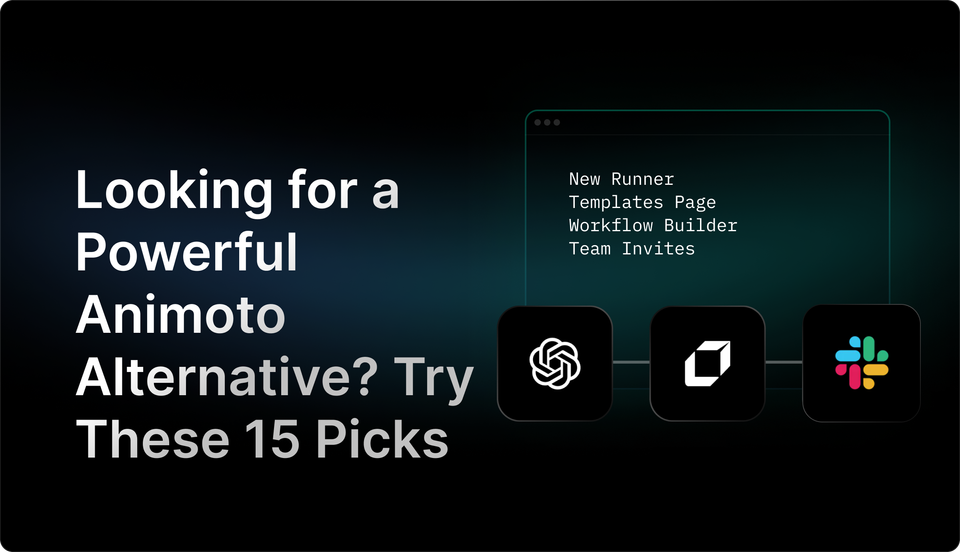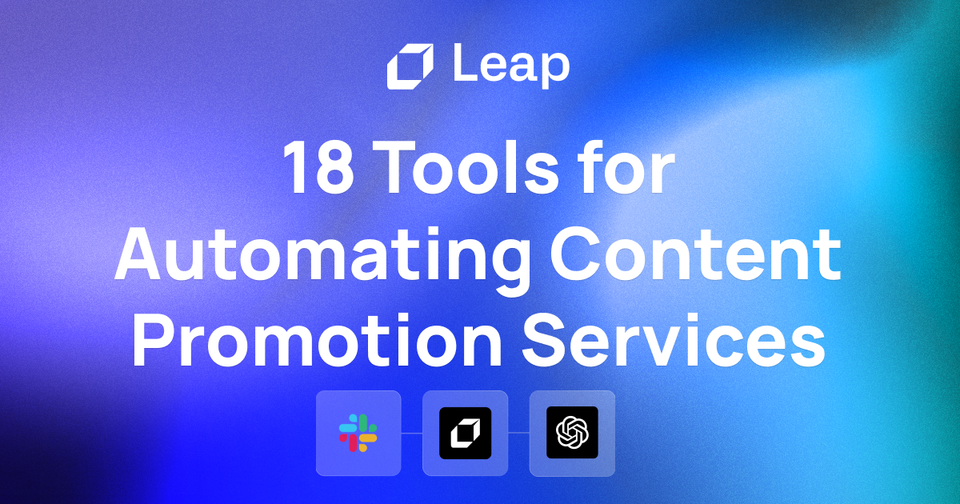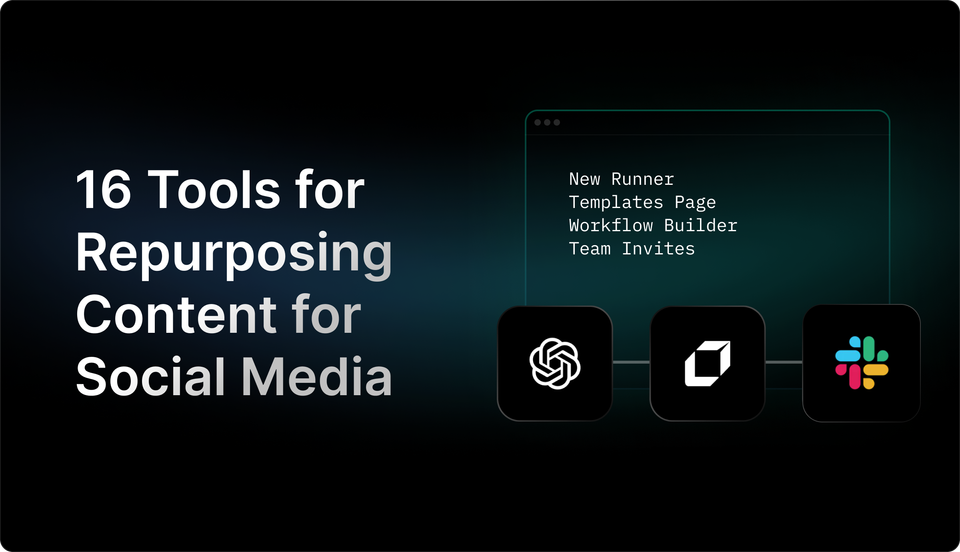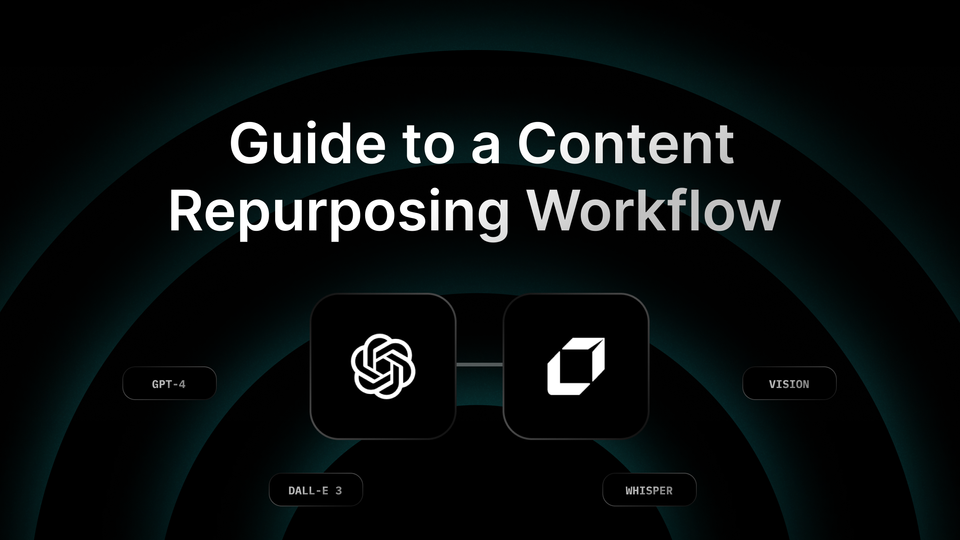14 Video Content Distribution Platforms to Maximize Your Reach
Want to get your video content in front of more viewers? Explore these video content distribution platforms and increase your reach today.
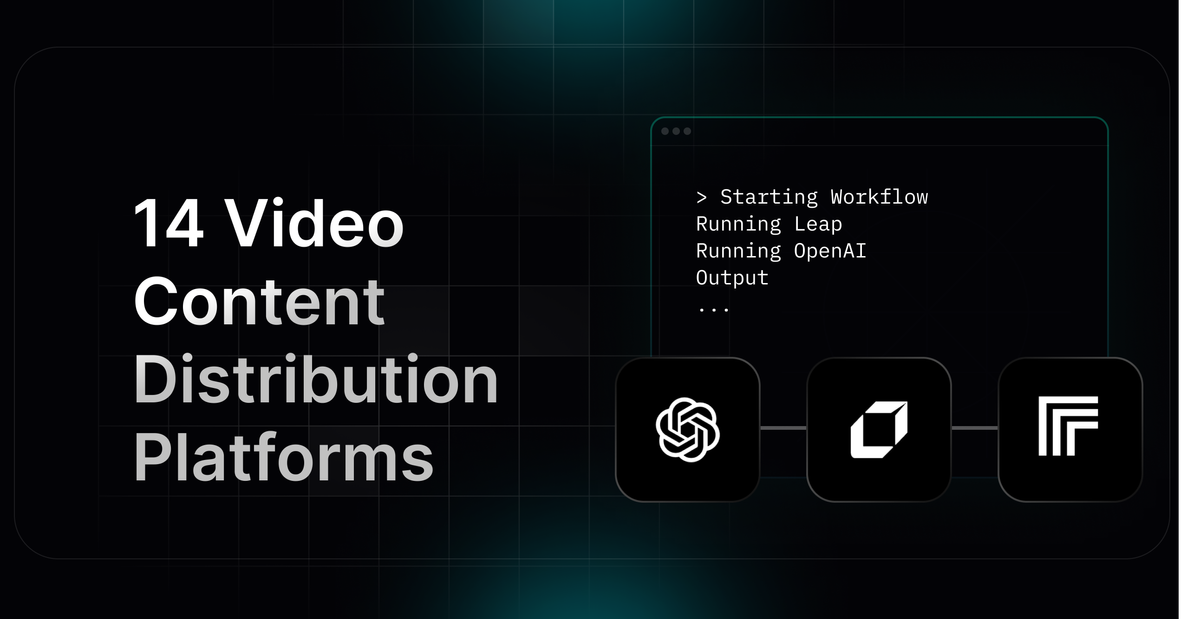
Video content distribution is a strategic method for sharing video content with a wide audience. This approach ensures that the user can view the content on various platforms or devices. By distributing video content through distinct channels, you can increase organic traffic, revenue, and brand recognition. Thus, understanding how to optimize video distribution can have a significant impact on your digital marketing strategy. In this blog, you will learn more about video content distribution and how you can improve your video distribution strategy. Let's dive in!

What Is Video Content Distribution?

Video distribution is the most critical aspect of video marketing. It involves the widespread dissemination and sharing of video content to reach the target audience effectively. It encompasses the process of sharing across different video distribution platforms and channels to maximize accessibility, discoverability, and engagement for the intended viewers.
Harnessing the Power of Video Marketing
According to the 2020 B2B Marketing Mix Report, 41% of surveyed marketing professionals said they would work to incorporate a video content marketing strategy. Clearly, video has been on the rise for marketers as it is an engaging way to involve your target audience in your message but also because consumers are looking for more video content.
Meeting Audience Demand
Promo conducted a 500 person survey surrounding online video watching habits and it revealed close to 50% of respondents watched over 5 videos a day. This means that your audience is watching and searching for video content – 67% used YouTube as their go-to online video platform. If you’re not yet using video as a part of your content marketing strategy, you need to work it in. Without video content, you’re abandoning the portion of your audience who are actively seeking visual content.
5 Reasons Video Content Distribution Matters to Businesses

1. Expand Audience Reach and Connect with Potential Customers
Video distribution is key for any business looking to expand its reach and connect with more potential customers. By sharing videos across various platforms, businesses can tap into new audiences who may not have come across their brand otherwise. This can help in building brand awareness and attracting new customers who resonate with the content shared.
2. Increase Video Engagement Significantly
Widespread video distribution can significantly increase video engagement. When videos are distributed across multiple channels, they have the potential to reach a larger audience. This not only drives views but also encourages interaction, such as likes, comments, and shares, which can further boost the video's visibility and engagement levels.
3. Improve Brand Visibility and Recognition
Sharing media content across various video distribution channels can improve brand visibility and recognition. As videos are shared and viewed by a wider audience, businesses can increase their brand visibility and recognition. This enhanced exposure can help in establishing the brand as a credible and trusted entity in the eyes of consumers.
4. Aid SEO Performance
Planned sharing of videos across websites and social media platforms can aid the business’s SEO performance. By incorporating videos into their content distribution strategy, businesses can boost their search engine optimization efforts. Videos have the potential to rank higher in search results, driving organic traffic to the business's website.
5. Gain Valuable Insights
Many video distribution channels offer robust analytics to provide valuable insights about audience behavior, preferences, engagement, and more. By leveraging these analytics, businesses can gain a better understanding of their target audience and tailor their video content to meet their preferences and needs. This data-driven approach can help in creating more effective video content that resonates with viewers.
Empower Your Workflow with Leap AI Automation
Leap helps you to automate your work with the power of AI. Partnered with Zapier, Vercel, and more, Leap enables you to supercharge your work by allowing you to create custom AI automations. Create sophisticated AI automations with no-code. Connect the tools you love with best-in-class AI text, image, and audio models.
Supercharge your existing tools with seamless AI integrations to OpenAI, Microsoft, and more. From summarizing documents, to voice translation, to AI call transcription, to AI avatar and asset generation, to SEO automation, to even automating the cold email creation and sending process, automate anything with Leap Workflows. The opportunities for automation are endless with Leap workflows.
Try Leap’s AI Workflows tool for free today.

Related Reading
- Content Promotion
- Content Repurposing
- Content Distribution Strategy
- Content Promotion Strategies
- How To Repurpose Content
- Content Distribution Platforms
What Are the 3 Types of Video Content Distribution Channels?

1. Earned Distribution
Earned distribution is the most important out of the three. It involves letting other users share your video content across their own preferred channels. The people who share your content can be influencers, magazines, news websites, or even average users who are retweeting or reposting your video across different social channels.
In all cases, earned distribution occurs when you are not paying anyone to share your content, but they are still doing so willingly. Examples of earned distribution are:
- Social media shares, retweets, reposts, and recommendations
- Product reviews
- Non-sponsored blog posts from third-party websites
- Organic high-ranking results on various search engines
2. Owned Distribution
Owned distribution refers to the practice of distributing your video content on any channel that you own yourself. Unlike in the case of earned distribution, video sharing takes place on third-party platforms and channels. As such, users have total control over this distribution method, allowing them to predict the returns over time.
Examples of owned distribution channels are:
- Your website
- Your blog
- Your company’s newsletter
- Your E-Commerce stores
- Your social media handles
3. Paid Distribution
Paid distribution is when you pay any third-party website or platform to share your video content to maximize reach and engagement. It differs from owned distribution in the sense that you don’t own the platform on which the video is shared. On the other hand, it differs from earned distribution in the sense that the third-party entities are not voluntarily sharing your videos but are obligated to do so because of your payment terms.
Examples of paid distribution channels are:
- Social media advertising, like sponsored posts on Facebook
- Sponsored content on third-party websites or blogs
- External advertising tools like Outbrain
- Display advertising and paid rankings on search engines
- Paid appearances on influencers’ channels or platforms
14 Best Video Distribution Platforms for Video Marketing

1. Leap AI
Leap helps you to automate your work with the power of AI. Partnered with Zapier, Vercel, and more, Leap enables you to supercharge your work by allowing you to create custom AI automation. Create sophisticated AI automations with no-code. Connect the tools you love with best-in-class AI text, image, and audio models.
Maximize Efficiency with Leap's AI Integration
Supercharge your existing tools with seamless AI integrations to OpenAI, Microsoft, and more. From summarizing documents, to voice translation, to AI call transcription, to AI avatar and asset generation, to SEO automation, to even automating the cold email creation and sending process, automate anything with Leap Workflows. The opportunities for automation are endless with Leap workflows.
Unlock Higher Engagement with Video Emails
Try Leap’s AI Workflows tool for free today. If you have a list of email subscribers then you have nothing to lose by distributing your new video in your latest email. If anything, people want to see videos in their inbox! According to GetResponse, emails with videos show a 5.6% higher open rate and a 96% higher click-through rate when compared to emails without videos.
2. Facebook
Facebook offers an extensive user base, which makes it an ideal platform to share your videos, reach a wider demographic and drive meaningful engagement with your audience. You can share your videos on the platform and connect with viewers dynamically and interactively.
3. Twitch
Twitch is widely popular for live streaming and gaming—which provides enthusiasts an opportunity to connect with an active and passionate community. Whether live streaming gameplay or other niche content, you can participate in real-time interactions with viewers to help build a dedicated following.
4. Instagram
Instagram is perfect for sharing short, engaging, and appealing video clips. You can leverage features like Reels, Stories, and IGTV to keep your audience captivated, share your story, and drive meaningful interactions that keep viewers coming back for more.
5. TikTok
With over 1.7 billion users, TikTok has some impressive stats to share. There was a time when the social media platform surpassed other popular platforms like Instagram and Facebook in the number of monthly app downloads. According to research conducted by TikTok itself, it seems that TikTok users find the platform to be a place where they can discover new topics they weren't previously interested in.
The majority of TikTok's audience consists of Gen Z and millennials, with the average age slightly younger than that of Instagram and Facebook users. Reportedly, TikTok users feel that this platform allows them to co-create, and 41% of respondents in the same study say they are more likely to trust a brand after seeing it on the platform. This platform may help YouTube creators find a new audience and engage more people with their content.
6. LinkedIn
LinkedIn is probably as different to TikTok as two social media sites could possibly be, but it’s still a great place for video distribution (depending on your ideal audience). LinkedIn is primarily used for professional networking and career development. It has 875 million members in more than 200 countries worldwide. As such, it’s best to share professional brand videos on LinkedIn, such as company updates, success stories, and behind-the-scenes content.
7. X (Twitter)
X is another huge social media site and another place you can post your video. Twitter has almost 400 million users, 200 million of which are daily active users. It can be easy to dismiss Twitter when it comes to your video marketing strategy, but listen to this: People spend 26% more time viewing video ads on Twitter than on any other social networking site! So if you’ve created a video ad, you need to distribute it on Twitter.
8. Pinterest
Originally an image-sharing platform, Pinterest is growing rapidly in the world of video marketing. The over 400 million active users on the site watch almost one billion videos every single day! Even better than that, people aren’t just watching videos on the platform. They’re taking action.
According to Pinterest, people spend 2x more per month shopping on their platform than on any other social media sites. Pinterest is a site where people typically share and save content that inspires, informs, or educates. As such, this is the type of content that tends to perform best on the platform.
9. YouTube
YouTube is the oldest and the most popular video-sharing and hosting platform. Users can upload, watch, and share videos on this platform on a daily basis. YouTube’s impressive user base as well as adequate search functionalities, make it a good platform for distributing your video efficiently.
10. Vimeo
Though YouTube holds the crown for the largest audience, Vimeo's numbers are certainly noteworthy. With 260 million users reported in 2022 and showing no signs of slowing down, it's clear that Vimeo is a force to be reckoned with. What's cool about Vimeo is how it helps you make money without bombarding viewers with ads like YouTube does.
It's ad-free, which many viewers love. You can earn cash through subscriptions, rentals, and more, without relying on ads. This can be a viable revenue stream for YouTube creators looking to diversify their income sources.
11. DailyMotion
DailyMotion is known for its basic interface, simplicity, and lack of regulations. You can upload virtually any type of video content on this hosting platform. While its functionalities and features are limited compared to YouTube and Gumlet, it offers a large user base for increasing the overall reach and engagement of your videos.
12. Gumlet
Gumlet is a powerful hosting platform and has a rapidly growing user base, making it a great option for people looking to expand their viewership. Gumlet offers many advantages such as easy transcoding, buffer-free streaming, and new-age, robust analytics support. It can serve as an integral part of a content creator’s video marketing strategy and aid in the quest to improve reach and engagement.
13. Dedicated landing page
In addition to distributing your videos all over the internet, you should also give them a dedicated home on your website. A landing page is a standalone page on your site with a specific marketing goal, such as increasing brand awareness or converting leads to customers.
14. Snapchat
With its focus on short-form video content, Snapchat has become a go-to platform for brands and individuals looking to reach a younger demographic, particularly Generation Z. Snapchat had 210 million daily users by the end of 2019 with over 210 million snaps created daily. The platform supports video content and is predominantly image/video sharing, making it an ideal platform for promoting teasers of longer videos or sharing short, engaging clips
14 Video Content Distribution Strategies to Maximise Reach

1. Upload Your Videos to Facebook, Natively
85% of all video content watched on Facebook is watched without sound, this only re-emphasizes the need for captioning content – especially if Facebook is going to be a chosen distribution channel. Once on Facebook, video optimization for social media is key – 92% of Facebook users access the app or website through mobile.
Square Videos for Mobile Engagement
On mobile, square videos can result in an 80-100% increase in engagement and in some cases bring in 30-35% more video views. If you don’t think mobile optimization is relevant, just remember that 94% of Facebook ad revenue comes from a mobile platform. Speaking of Facebook ads, the cost to purchase ads decreased 6% in 2019 while a 37% increase in ad impressions occurred.
Live Streaming on Social Media
Without getting too far away from content distribution, you should consider the importance of going live on your social media platforms (and consider using a live streaming platform if you want to stream on multiple channels at once.). Facebook users are 4 times more likely to watch live-stream videos than recorded content.
Content Distribution Through Webinars and Live Q&A
Leverage that information by hosting a webinar or live Q&A based on a topic you recently released content, that way your webinar or Q&A is doing double duty – gaining engagement and promoting previous pieces of content. And once you’re done, you can use a video maker to edit and repurpose your live stream for distribution down the road.
2. Snapchat, TikTok, and Instagram are the Top Channels for Short Videos
All three of these platforms support video content and are predominantly image/video-sharing platforms. Shortened content tends to perform better on these platforms. Quick Stats TikTok has an estimate of 800 million monthly users Instagram has 1 billion monthly users, with 500 million daily story users, and it is the fastest-growing social media platform in Canada.
Snapchat had 210 million daily users by the end of 2019 with over 210 million snaps created daily. These platforms are great for promoting teasers of your longer videos, a 30-second clip of an educational video with a link to the whole clip on your site.
3. LinkedIn Maintains Retention of B2B Marketers
Whenever we think of B2B marketing the first place our minds wander to is LinkedIn and for good reason. LinkedIn is by far the most reliable site for B2B companies to engage with one another. There are over 690 million users on LinkedIn, in over 200 countries, with a join rate of 2+ new members a second.
These users are professionals from every industry who are online during working hours, with their business caps on. All those stats make LinkedIn a B2B marketer’s playground, and we have the ultimate guide to B2B marketing on LinkedIn. When it comes to video, LinkedIn does not disappoint us as it has emerged as the most successful channel for B2B video marketers – an overwhelming 87% of marketers using video on LinkedIn described it as an effective channel.
If you’re new to video marketing start by creating one of the most common types of video:
- Explainer videos (72%)
- Presentation Videos (49%)
- Testimonial Videos (48%)
- Sales Videos (42%)
- Video Ads (42%)
4. YouTube is the Market Leader in Video Sharing Platforms
Well, you knew this was coming up because you can’t talk about videos without discussing the kingpin that is YouTube. If you’re looking to grow a YouTube platform for video content we have a lot of need-to-know YouTube marketing statistics for you → did you know that on average a first page YouTube video is 15 minutes long?
Capitalizing on YouTube's Massive Audience
With over 2 billion monthly users, this is the place to be distributing your video content. How-to videos are here to stay. 90% of DIYers watch how-to videos on YouTube during an actual project. These don’t have to be construction or hobby-styled how-to videos, software walkthroughs are just as popular on the platform.
Optimizing Video Format and Tools
Although the platform supports almost all formats, the recommended format is MP4, so you might want to use a WebM to MP4 converter to set up your content for success.Tools like FlexClip can help you create and edit captivating videos that resonate with your audience, while a YouTube hashtag generator can help you find relevant YouTube hashtags. To optimize for mobile, 70% of YouTube views come from a mobile device.
5. Gifs are Great for Landing Pages
Everyone loves gifs… or is it jifs… regardless of what you call it, we all enjoy them. Something we don’t enjoy is a slow loading web page due to a video that auto-plays with sound on the homepage. If your page is struggling to load a video, why not turn that into a gif that clicks through? Gifs are essentially condensed videos with animation added in so why not make a gif out of your video? It is easier than you think and they are a great way of sharing video content.
6. Repurpose Top Content into Blog Posts
For every video you create, which is resonating with your audiences & performing well, you should write an accompanying blog post around the same topic of your video. Cisco’s 2019 Internet Phenomena Report, revealed 60% of all internet traffic was video streaming, up 22% since 2018, but we can’t neglect the 21% of folks still looking to read about a topic.
7. Engage Through Email with Video
Sending out a weekly or monthly newsletter? Include a video snippet that provides specific tips, showcase products, or advertise events to customers. Emails are so mundane and routine, but by throwing in a video, you have just changed the game in grabbing audience’s attention.
Including video content in emails can increase the open rate by 6%. Now that you have your audience engaged, pull them through to your site with an enticing call to action or make your video a click-through – sending them directly to a landing page.
8. Learn From Your Competitors and Industry Leaders
I am not here to condone plagiarism or stealing – I am here to condone inspiration. Your competition will always be your competition, why not leverage them and learn from their best practices? Take a scroll through your competitors’ YouTube channels, filter to see their most popular content, and then develop content that hits the same mark.
Untapped Opportunities from Competitor Analysis
Looking for a different tactic? Start from the bottom of your competitor’s most popular list. Find the content they did not execute well and decide if that is an avenue your brand should try recreating to gain the lost traffic. Just because it didn’t work for them doesn’t mean it won’t work for you.
Leveraging Industry Trends for Effective Video Content Strategy
At the end of the day, it is best to see what your industry is succeeding in and starting from there. Perhaps DIY videos don’t do as well, but product showcases really shine, take that information and learn from it. This prevents you from wasting time and funds creating videos that are prone to flopping.
9. Show Off Your Fun Side
At the end of the day, there are no rules on what content you can and can’t create. With video, there are no limits because people aren’t always looking for informational content – many times viewers are logging into YouTube to be entertained. It is also important to get over the idea that all content needs to be centered around your products.
Generation Z is looking to find transparent brands they can trust, they are looking to bond with brands, and not just buy from them. This is where branded content really comes into play. Doing this allows your brand to remain relevant in the consumer’s mind, build brand trust, and create an alternative pathway to engage with your audience.
10. Brand Storytelling lets People in Behind the Scenes
In addition to branded content, you can always dabble in brand storytelling. Be it through making a silly face for your Snapchat account, sharing footage of user-generated content or a fun prank captured on video, companies are beginning to understand the effectiveness of letting a brand’s story come through. Apple Music gave their Snapchat audience a great experience by taking them behind the scenes of their Beats 1 radio station studio through Snapchat.
11. Meta Tags for the Benefit of Google Bots
Metadata is the information used to describe the content of a web page, document, file, or anything else that can be uploaded online (photos and videos). In layman’s terms metadata is a short explanation or summary of what the content is all about. For video specifically, it is the text surrounding the video file that references and explains the video content – search engines like Google rely on video metadata to rank and display video results. Web bots crawl your site, judging the quality of your content and ranking the suitability of your page content in answering a search query.
Google's Ranking Factors for Video Content
Although Google is using hundreds of factors to determine which content should rank, two factors, in particular, seem to be more important than others—backlinks and text-based content. Sadly these bots can’t watch videos and backlinks don’t fit in with video content either… Does that mean these bots just surf by video content??? No, they simply read the text information associated with your video and judge the quality of your video based on that information; video title, video descriptions, and video tags.
Optimizing Video Descriptions and Titles for SEO
Ensuring your descriptions and titles are detailed and accurate to the content displayed in the video, will benefit your SEO ranking as Google bots will now understand the quality of your video content. Don’t be afraid to use AI to your advantage here, with tools like a YouTube title generator to get the creative juices flowing. Having a high-ranking SERP placement will help to drive traffic to your site since the majority of search engine users don’t click past page one; this can lead to SERP dominance.
12. Transcriptions Increase the Value of Your Information
Looking to increase your video rank on Google? Why not provide a video transcription. BOOM! You have easily increased your keyword opportunity. Since SERP ranking and traffic go hand in hand, you want to prepare yourself with every keyword avenue. By including a transcription of your video, you are effectively giving Google bots all of the information you’re sharing vocally that they aren’t able to hear.
Along with keywords, you have also unlocked an entire script of backlinking and internal linking opportunities. Transcriptions will also benefit those working in a loud space, those with impairments, those who don’t have English as a first language, and those who prefer using CTRL+F to search for specific content instead of watching a full-length video.
13. Captions Create Inclusivity for Those Viewing without Sound
Adding captions to your videos may not sound like a distribution tactic, but it can vastly improve your video’s reach. Captioning is a broad term spanning from closed captions to built-in captions indicating key facts or topic change.
Captions help make your video content more accessible to viewers who choose to watch without sound or are hard of hearing; you can also leverage captioning and offer multiple language options to create international reach. Plus, there are plenty of free video editing tools on the market you can use to pull it off.
14. Built-in CTA’s and Links Push Prospects Through Your Funnel
Gone are the days of YouTube’s annotations. That feature was discontinued in 2017 after YouTube realized those pop-ups were not optimized for mobile devices and many users were engaging with annotations simply to close the obstructive text windows. With the discontinuation of annotations came the rise of mobile-first designed end screens and cards.
Maximizing Engagement with End Screen Features
These end screens allow you to have the ability to link another video or playlist – if using YouTube, you can set the recommended video to be picked by YouTube’s algorithm to best fit the user. As well you can have an end-screen call to action to subscribe to your channel – or visit your website. Venngage chose to utilize their end screen to promote a related video as well as a call to action to subscribe to their channel.
Good to Know
YouTube gives you the option to select “best for viewer”, which will recommend a video from your channel based on suitable for that specific viewer, based on their YouTube usage, retaining the viewer on your channel.
Related Reading
- Content Repurposing Workflow
- Repurposing Content For Social Media
- Content Promotion Services
- Animoto Alternative
- Social Media Distribution
- Content Repurposing Service
- Repurpose Video Content
- Paid Content Distribution
- Content Distribution Software
5 KPIs to Measure the Success of Video Content Distribution

To evaluate the effectiveness of a distribution strategy, it is crucial to measure the success of distributed videos using key performance indicators (KPIs) and metrics. Key metrics such as:
- Views
- Watch time
- Engagement rate
- Conversion rate
- Utilizing Analytics Tools
By analyzing these metrics, you can determine whether your video distribution strategy is achieving the desired outcomes. In addition, utilizing analytics tools available on platforms like YouTube and Google Analytics can offer more detailed insights into the performance of your videos across different channels and platforms. Let's take a closer look at these key metrics and how they can be used to evaluate the effectiveness of a distribution strategy.
Related Reading
- Content Distribution Companies
- Planable Alternatives
- Repurpose Alternative
- Repurpose Blog Content
- Content Promotion Tools
- Visme Alternatives
- B2b Content Distribution
- Socialpilot Alternatives
- Vidyo Ai Alternatives
- Content Distribution Services
- Meetedgar Alternatives
- Missinglettr Alternatives
- Lumen5 Alternative
5 Common Challenges in Video Content Distribution and How to Overcome Them

1. Overcoming Limited Reach in Video Content Distribution
One common challenge in video content distribution is limited reach, especially for businesses starting out. To expand your reach, develop a distribution plan that includes leveraging social media platforms, email marketing, influencer partnerships, and paid promotional opportunities.
By utilizing these channels effectively, you can increase the visibility of your video content and reach a broader audience base. Consider collaborating with industry influencers to tap into their existing follower base and gain more exposure for your videos.
2. Enhancing Viewer Engagement with Interactive Content
Another challenge often faced in video distribution is low viewer engagement. Creating relevant and engaging content tailored to your target audience can help increase engagement levels.
Consider incorporating storytelling techniques, interactive elements, and personalized messaging to make your content more appealing and encourage viewers to interact with it. By making your videos more interactive and engaging, you can capture and hold the attention of your audience, leading to deeper engagement and increased viewer retention.
3. Developing a Comprehensive Content Distribution Strategy
Developing a comprehensive content distribution strategy is essential for successful video marketing. Start by creating a distribution plan that outlines the channels, timeline, and goals for distributing your content effectively.
By clearly defining your distribution strategy, you can set measurable objectives for your video marketing efforts and track your progress over time. This will also help you stay organized and focused on achieving your distribution goals, leading to more successful outcomes for your video content.
4. Getting Started with Video Content Distribution
Getting started with video content distribution can be daunting, but breaking it down into manageable steps can make the process more approachable. Begin by identifying your target audience, selecting the appropriate distribution channels, and creating engaging content that resonates with your viewers.
By taking these initial steps, you can establish a solid foundation for your video distribution efforts and set yourself up for success in sharing your content with the world.
5. Standing Out in a Crowded Content Landscape
With the abundance of content available online, capturing and retaining viewers' attention is a challenge. To stand out from the crowd, focus on creating meaningful and valuable content that addresses your audience's needs and interests.
By providing content that adds value to your viewers' lives and resonates with their interests, you can differentiate your videos from the competition and attract a loyal following of engaged viewers. This will help you build a strong brand presence and grow your audience over time, leading to more successful video content distribution.
Create Game Changing Automations Today With Leap’s AI Workflows
The realm of video content distribution is rapidly evolving, and it's crucial for businesses to stay ahead of the curve. AI plays a pivotal role in enhancing video content distribution strategies by offering sophisticated tools and solutions that can streamline the process. AI-powered tools can help businesses analyze data, predict trends, and tailor video content for specific audiences, ensuring maximum reach and engagement.
Automating Video Content Distribution with AI Workflows
AI Workflows from Leap offer a game-changing solution for automating critical aspects of video content distribution. From summarizing video content to optimizing for SEO, AI Workflows can take your video content distribution game to the next level. By automating repetitive tasks such as metadata tagging and keyword optimization, AI Workflows can help businesses focus on creating high-quality video content while ensuring maximum visibility across platforms.
Optimizing Video Content Distribution Strategy with AI Insights
AI Insights from Leap can provide businesses with valuable data and insights to optimize their video content distribution strategy. By analyzing data and identifying key trends, AI Insights can help businesses refine their content strategy, target specific audiences, and maximize engagement. With AI Insights, businesses can unlock new opportunities and drive growth in the competitive landscape of video content distribution.
Enhancing User Experience with AI-Powered Video Content Distribution
AI-powered solutions such as AI avatar and asset generation can revolutionize user experience in video content distribution. By creating personalized avatars and assets, businesses can enhance engagement and create a unique brand experience for users. AI tools such as voice translation and AI call transcription can augment user experience by providing seamless, multilingual content delivery, catering to diverse audiences worldwide.
Seamless Integration with Leading AI Models for Video Content Distribution
Leap's seamless integration with leading AI models such as OpenAI and Microsoft enables businesses to leverage the best-in-class AI capabilities for video content distribution. By integrating with these models, businesses can access cutting-edge AI solutions for tasks such as video summarization, sentiment analysis, and content optimization.
With Leap's AI integrations, businesses can supercharge their existing tools and workflows, ensuring maximum efficiency and impact in video content distribution.

